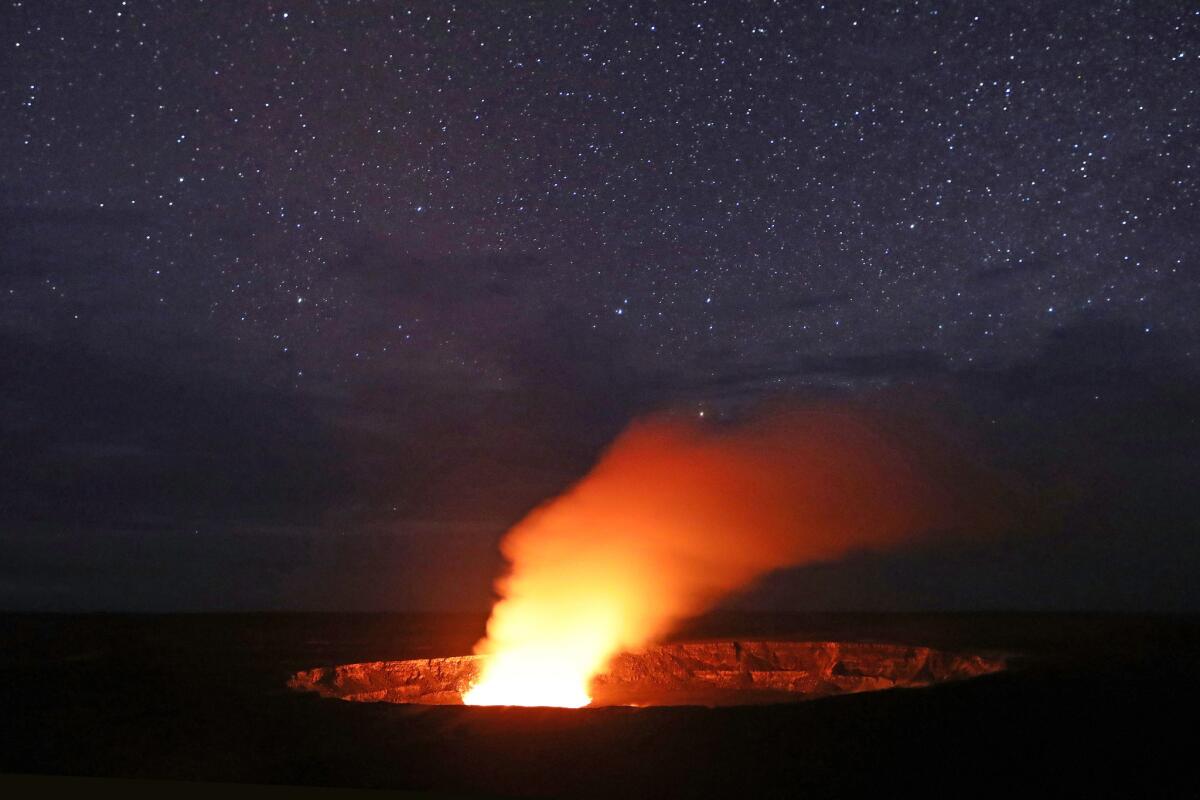Kilauea volcano flexes its muscle, destroying homes and forcing evacuations

- Share via
The U.S. Geological Survey has warned that the summit of Hawaii's Kilauea volcano could experience explosions in coming weeks and send large quantities of ash into the air.
Evacuations or significant damage is not expected because the summit is far from populated areas — and 25 miles away from the Leilani Estates neighborhood, where lava flows have destroyed 36 structures since a new eruption began at the volcano this month.
The risk of explosions is the latest possibility in a chain of events that began April 30 with the collapse of a lava-filled crater 12 miles east of the summit.
Lava drained from the collapsed crater underground. The missing lava began reemerging on May 3 at the surface in Leilani Estates, oozing up through cracks in the ground and consuming homes, cars and roads.
Additional outbreaks or a resumption of activity are anticipated as seismicity continues in the area.
— Hawaiian Volcano Observatory
At least 12 fissures have developed since Kilauea began a fresh eruption Thursday in the Leilani Estates neighborhood, located about 25 miles east of the summit of Kilauea, one of the world's most active volcanoes and Hawaii Island's youngest.
The last time Kilauea opened up fissures in a residential area was in 1960, just outside the town of Kapoho. Lava fountains in that eruption reached up to 330 feet high. When the crack began to seal up, the geyser that resulted was even taller.
The state of Hawaii has six active volcanoes, four which are on Hawaii Island. The three others are:
- Mauna Loa, which the USGS says is the largest volcano on Earth and last erupted in 1984. That eruption lasted for 22 days and caused flows of lava that got to within about 4½ miles of Hilo, the largest populated area on the island;
- Hualalai, which last erupted in 1801, creating a lava flow that is now underneath Kona International Airport;
- Mauna Kea, the highest volcano on the island. It last erupted 4,500 to 6,000 years ago.
Sign up for Essential California
The most important California stories and recommendations in your inbox every morning.
You may occasionally receive promotional content from the Los Angeles Times.








